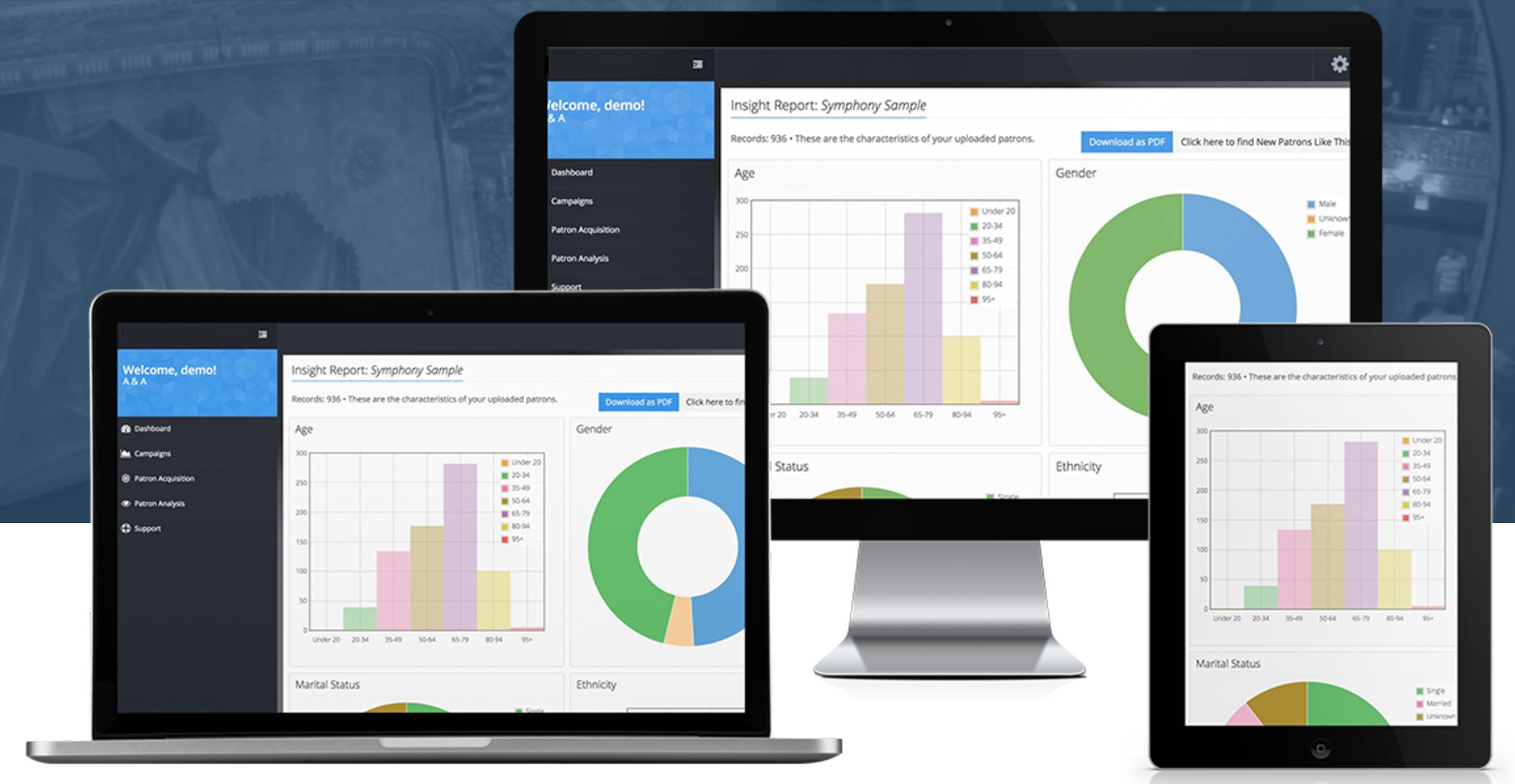Broadway Enters the ‘Big Data’ Era

How Arts & Analytics is contributing to big data’s starring turn on Broadway
Performing arts have been around for as long as people have walked the earth. The act of going to a theater, sitting down in a chair, and watching a story unfold through acting, song, or dance has remained virtually unchanged for centuries. However, the availability of data and analytics is changing the way those in the theater business market and fundraise, allowing more efficient and detailed targeting of current and future audiences. Some digital marketing companies have begun to offer services tailored for the performing arts, such as big data start-up Arts & Analytics which has chosen to focus specifically on providing predictive analytics software to meet the needs of arts and culture organizations.
Value Creation
Arts & Analytics is a Denver-based company whose goal, as explained by founder and CEO Lee Gallagher, is “to connect artists to their ideal audience: an audience who appreciates what they do, and comes back for more…it’s about getting the right message about the right show to the right person, at the right time.” Most arts organizations need to not only grow their audiences, but grow specific segments of their audience (for example, symphony orchestras looking for younger patrons to replace their aging customer base). As a result, these organizations are constantly looking for “look-alikes” – new patrons who behave like current patrons, as well as for ways to improve existing customer retention.
An organization might want to use data to find out the demographics of the people who attended the world premiere of a play, to look at the growth of a particular audience segment year over year, or to provide better targeting for email and paper brochures to increase response rate and decrease unsubscribe rates. Normally, to get demographic information about audiences, an arts organization would have to reach out to some sort of list broker in their geographic area that can do a list matching – a process where they take the organization’s patron lists, run them against their database, and attach demographics to each person. Some basic demographics include age, presence of children in the home, annual income, etc; other information above and beyond the standard that one might want to know include things like whether someone loves wine or invests in stocks.
Arts & Analytics combines clients’ in-house data on their customers (purchase histories, behavioral stats, etc.) with data it has sourced and bought to help arts organizations strategically attract and retain audiences. The company offers a software-as-a-service solution called P360™ which uses predictive modeling to attack as many as 110 audience segments and has attracted theater clients in Las Vegas, Utah, Chicago, New York and Florida. P360™ greatly simplifies the list matching process by allowing users to load in their excel lists of patrons, ticket buyers, or donors themselves, let the software run, and view the appended demographic data in just a few minutes. Users can easily “clone” their list of current patrons in order to find other similar people to target. Essentially, their pitch is that smarter marketing and fundraising helps to save money and boost revenue.

Some examples of the uses of data and analysis include:
- Patron Acquisition
- Find new single ticket buyers
- Bring in new subscribers
- Identify new donors
- Reactivate lapsed ticket buyers
- Patron Retention
- Identify multi-buyers and turn them into subscribers
- Monitor and prevent ticket buyer attrition
- Custom Services
- Track donor and patron lifecycles
- Monitor patron loyalty
- Calculate lifetime value
- Create market penetration reports

Value Capture
Rather than paying per service, the P360™ software is offered as a subscription service with three different price tiers: Patron at $275 per month, Critic at $525 per month, and Gold Circle at $999 per month. The plans increase in terms of data inputs (number of patrons, etc.) and outputs (cloned prospects) with price. Using P360™ to harness the power of data and analytics saves organizations both time and money: according to Gallagher, putting together such precise demographic information in the past would have taken six weeks and $40,000.

Looking Forward
In today’s digital age, many industries are realizing the benefits of targeted marketing and data-based customer insights and metrics. Companies everywhere are using historic transactions to predict future outcomes. However, the performing arts as a whole has been slow at adopting a data-driven approach, an unfortunate fact given that traditional marketing channels can no longer be relied upon for fundraising or to sell tickets and subscriptions. Innovation is required for arts organizations to thrive and Arts & Analytics is certainly doing its part to contribute to big data’s starring turn on Broadway.
Sources
- Forbes. https://www.forbes.com/sites/leeseymour/2015/05/20/big-data-comes-to-broadway-and-beyond-with-patronlink360/#bd3de872c1a7
- Playbill. http://www.playbill.com/article/how-a-lifetime-in-banking-paved-the-way-to-predicting-broadway-audiences-com-349706
- American Theater. http://www.americantheatre.org/2014/10/22/advantages-of-the-big-data-era
- Adweek. http://www.adweek.com/digital/data-era-theater-marketers-can-no-longer-act-digital-understudies-164745/




Interesting post! I’ve also recently heard of these guys. How bullish are you about their value proposition and capture potential? I agree that arts organizations are far behind the curve on using data and updating their marketing and customer retention efforts, but I’m not convinced that the product that Arts & Analytics is offering will bring them into the data-age. It feels to me more like taking advantage of a segment that doesn’t really understand data and selling them the idea of it (proprietary algorithms, black box). Additionally, I think the offering is much more helpful to nonprofit arts organizations rather than Broadway, which they are branding for. It is unclear how they will deliver on providing more leads on ticket buyers (rather than subscriber management), which is important to Broadway.